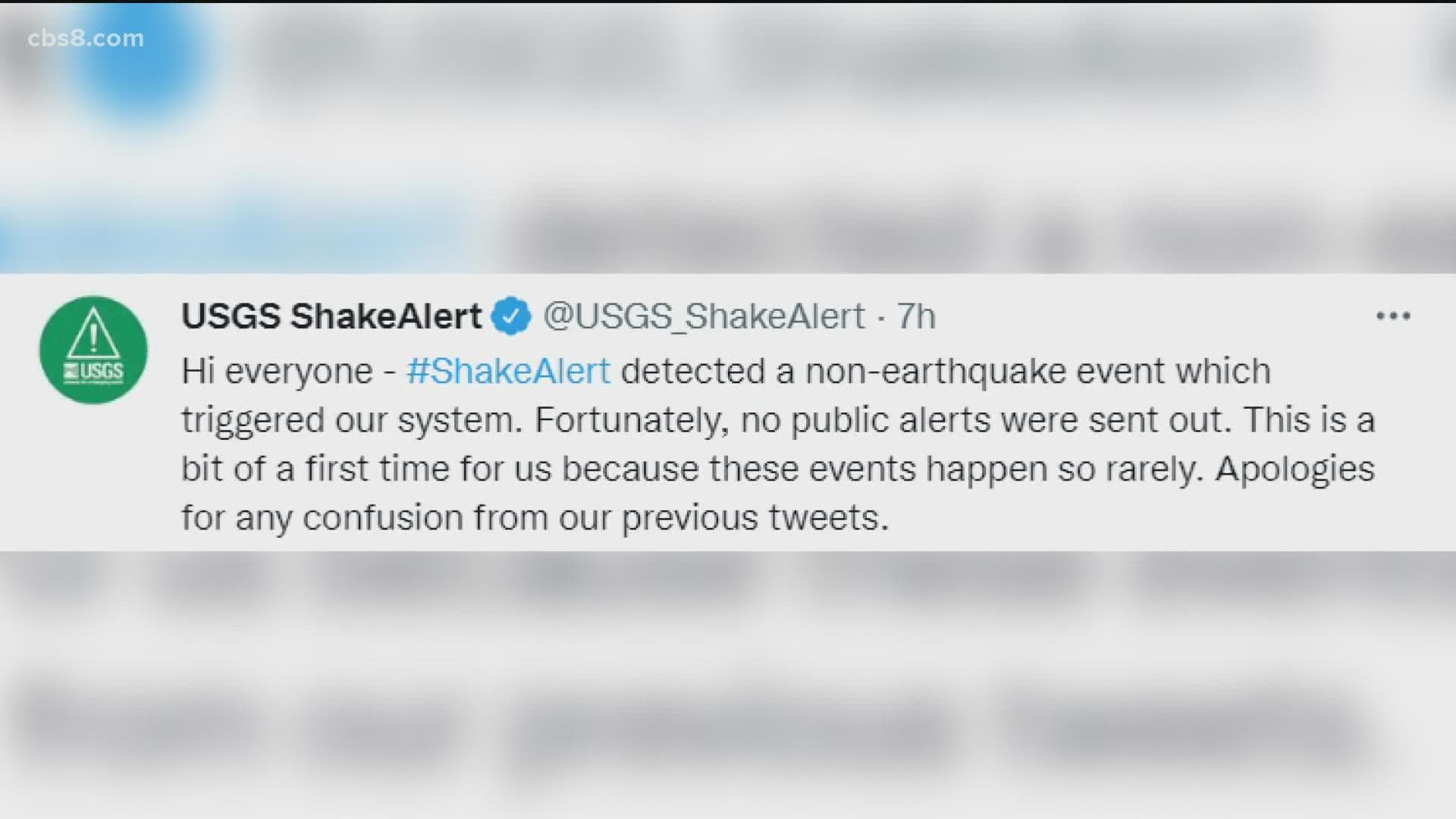SAN DIEGO — Experts say Southern California experiences about 20-30 earthquakes a day. The earthquake felt throughout San Diego County on Thursday with the epicenter in Ensenada wasn’t out of the ordinary.
But what was out of the ordinary was the earthquake false alarm that came the next morning. The mistake was later discovered to be a misreading from the U.S. Geological Survey.
The 4.6 magnitude rumble on Thursday still came as a surprise to some people.
"It was definitely a little startling and it reminded me we live in California," said Karen Falk, a resident in San Diego.
But some San Diegans didn't think it was an earthquake.
"I thought it was my son jumping on the bed upstairs," said Elien Alexander.
CBS 8 spoke with USGS scientist, Dr. Robert Michael de Groot and he says what we experienced is nothing out of the ordinary.
"We live in California on an active plate tectonic boundary, it’s constantly in motion," said de Groot. De Groot says every year southern California moves closer to the bay area by an inch.
"We just happen to live in a place where there’s a lot of movement all the time," said de Groot.
But he says earthquakes like the 4.6 experienced by many on Thursday are actually kind of a relief.
"There is some science behind that potentially there may be a bigger event after this event but that possibility decreases very quickly after the event yesterday – so the chance of having an earthquake after this is very small," said de Groot.
On Friday, a false alarm near Catalina island was reported by the USGS shake alert, a system that monitors activity. De Groot said that the shake alert was incorrectly published.
"It was actually a series of stations that had a noise glitch, two of those stations were on Catalina Island and the other two one in Huntington Beach and one in Long Beach," said de Groot.
De Groot is a part of a massive team that built and operates Shake Alert. It's a monitoring system that can quickly detect an earthquake. He says in this instance the information was given too quickly.
Keep in mind that there could be potential for aftershocks after the earthquake felt on Thursday. But De Groot says unless you live in southern San Diego, it will be almost unnoticeable as they'll be very small.
There is an app that will send a warning right before an earthquake. To download the app, just visit this website.
WATCH RELATED: Did you feel it? Earthquake felt across San Diego County (April 2022).

